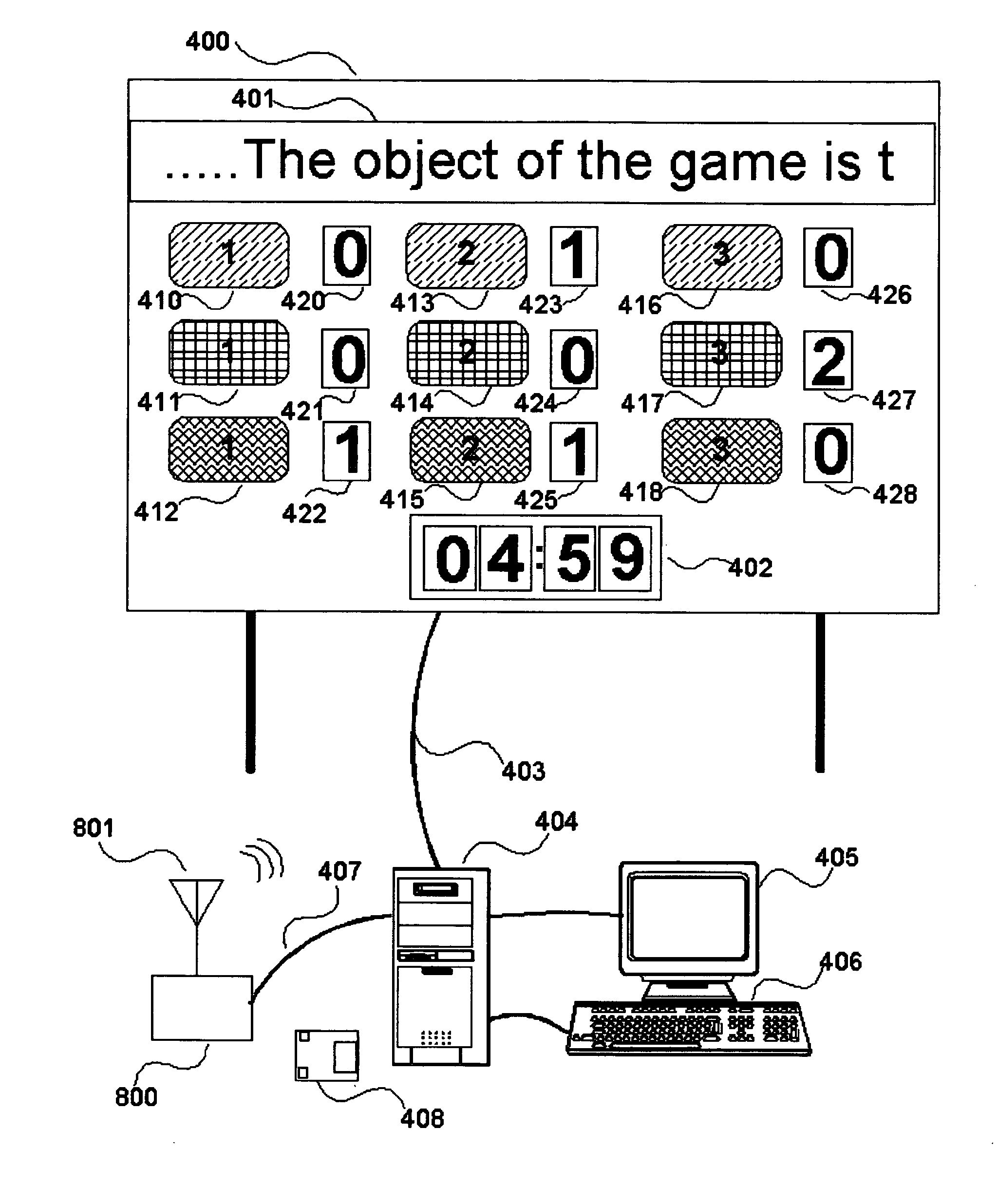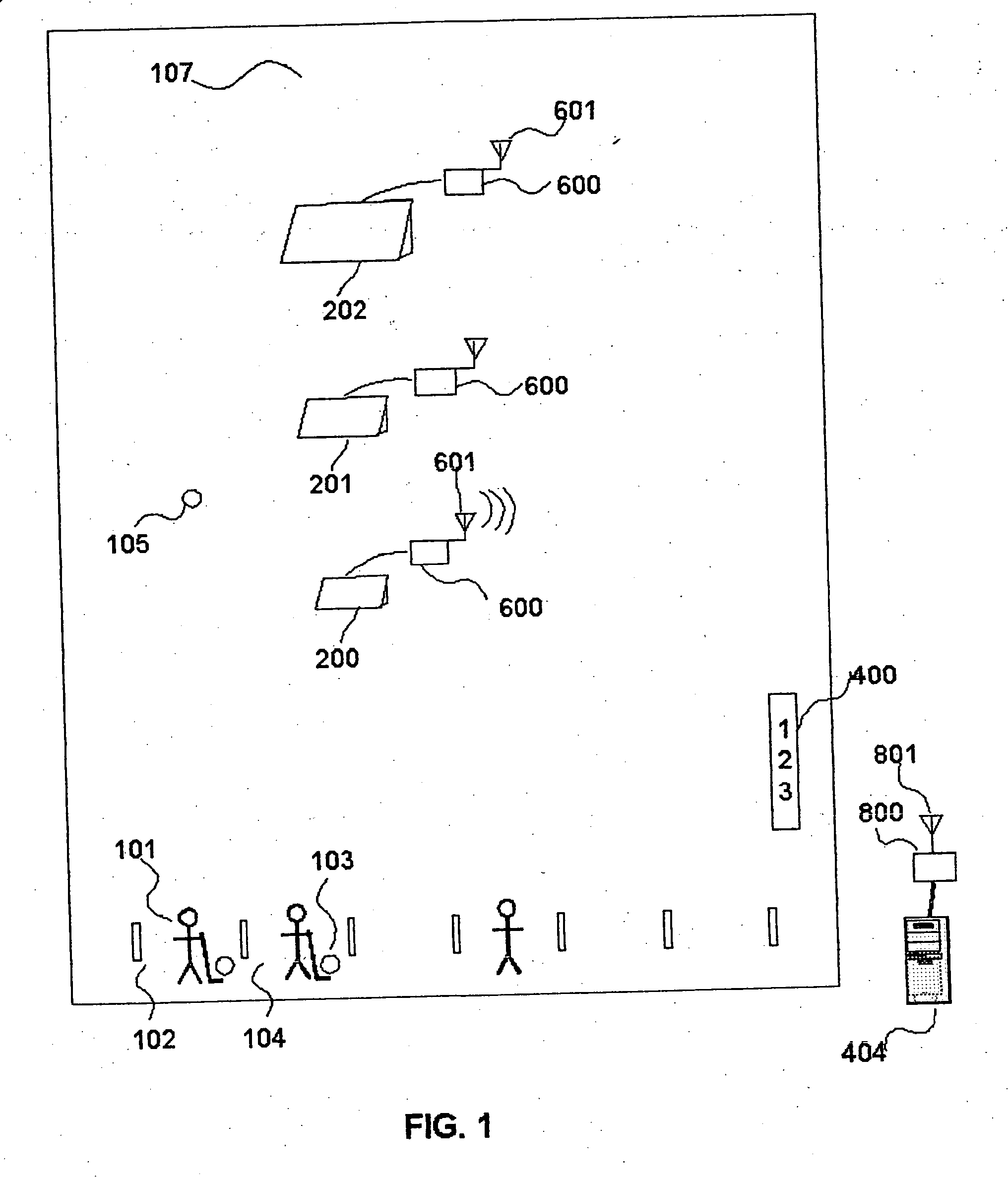Automated game system for use on golf driving ranges and in other arena-based sports
a game system and driving range technology, applied in the field of sports entertainment, can solve the problems of inconvenient use, high system cost, repeated maintenance, etc., and achieve the effect of quick setting up of target(s) and low system cos
- Summary
- Abstract
- Description
- Claims
- Application Information
AI Technical Summary
Benefits of technology
Problems solved by technology
Method used
Image
Examples
Embodiment Construction
[0051] Certain terms used herein are defined below:
ADC:analog to digital converterASCII:American standard code for information interchangeBAUD:Serial communication data rate in bits per second.Byte:Digital data word 8 bits in lengthCharacter:a symbol from the ASCII set.Checksum:A numerical sum of the data in a set or list.CPU:Central processing unit.EEPROM:electronically erasable programmable read onlymemory.FLASH Memory:Electrically alterable read only memory.(See EEPROM)FM:Frequency ModulationFullDuplex: Simultaneous two way transmission ofinformationGUI:Graphical user interface.Hexadecimal:Base 16 representation of integer numbers.Half Duplex:Non-simultaneous bi-directional transmission ofinformation.IC:Integrated circuit.I / O:Input output.Interrupt:Signal the computer to perform another task.IR:Infer Red (invisible long wavelength light)IRQ:Interrupt requestLED:Light emitting diode, solid-state light source.Long word:Digital data of a 32 bits length.LSW:Least significant wordMS...
PUM
 Login to View More
Login to View More Abstract
Description
Claims
Application Information
 Login to View More
Login to View More - R&D
- Intellectual Property
- Life Sciences
- Materials
- Tech Scout
- Unparalleled Data Quality
- Higher Quality Content
- 60% Fewer Hallucinations
Browse by: Latest US Patents, China's latest patents, Technical Efficacy Thesaurus, Application Domain, Technology Topic, Popular Technical Reports.
© 2025 PatSnap. All rights reserved.Legal|Privacy policy|Modern Slavery Act Transparency Statement|Sitemap|About US| Contact US: help@patsnap.com



